What is the smallest unit of life?
(a) Atom
(b) Cell
(c) Virus
(d) a & b
Answer: b
What is the largest organ of the human body?
(a) Liver
(b) Intestines
(c) Stomach
(d) Skin
Answer: d
What is Celluloses?
(a) Fats
(b) Carbohydrates
(c) Vitamins
(d) Protein
Answer: b
The smallest of all human cells are
(a) Nerve cells
(b) WBCs
(c) Epithelial cells
(d) RBCs
Answer: d
How many bones are there in the adult human body?
(a) 206
(b) 306
(c) 250
(d) 260
Answer: a
Which type of cells has no nucleus?
(a) Red blood cells
(b) Nerve cells
(c) White blood cells
(d) None of these
Answer: a
White blood cells are also known as
(a) Leucocytes
(b) Thrombocytes
(c) Erythrocytes
(d) None of these
Answer: a
Red blood cells (RBC) are also known as
(a) Erythrocytes
(b) Thrombocytes
(c) Leucocytes
(d) None of these
Answer: a
Erythrocytes, leucocytes and platelets are collectively constituted nearly how much percent of the blood?
(a) 25 per cent
(b) 35 per cent
(c) 45 per cent
(d) 65 per cent
Answer: c
Which of the following terms is NOT a category for biological classification?
(a) Kingdom
(b) Order
(c) Phylum
(d) Composition
Answer: d
Fungi absorb the nutrients from dead organisms. In the animal kingdom, fungi are known as what?
(a) Producers
(b) Absorbers
(c) Consumers
(d) Decomposers
Answer: d
Which of the following cell organelles does NOT participate in cellular division?
(a) Ribosomes
(b) Chromosomes
(c) Mitotic spindle
(d) Cytoplasm
Answer: a
An animal that consumes only meat or other animals, is called a what?
(a) Omnivore
(b) Herbivore
(c) Carnivore
(d) Consumavore
Answer: c
The longest bone in the body of human being is
(a) Tibia
(b) Femur
(c) Fibula
(d) Stapes
Answer: b
The shortest bone in the human body is the
(a) Vertebrae
(b) Stapes
(c) Phalange
(d) Metacarpal
Answer: b
Red blood corpuscles are formed in the
(a) Liver
(b) Bone marrow
(c) Kidneys
(d) Heart
Answer: b
Most highly intelligent mammals (except man) are
(a) Whales
(b) Dolphins
(c) Elephants
(d) Kangaroos
Answer: b
What is the main difference between the prokaryot and the eukaryot?
(a) The eukaryot has a nucleus, and the prokaryot does not
(b) The prokaryot has a nucleus, and the eukaryot does not.
(c) The eukaryot is always larger than the prokaryot.
(d) None of these
Answer: a
Bacterial infections in humans can be treated with what?
(a) Antibiotics
(b) Mycology
(c) Photosynthesis
(d) Extinction
Answer: a
Which of the following would you NOT find in a bacterial cell?
(a) Cell membrane
(b) DNA
(c) Golgi apparatus
(d) Ribosomes
Answer: c
The first sign of life made its appearance on the earth about
(a) 1 million years ago
(b) 500 million years ago
(c) 1 billion or 1000 million years ago
(d) 3 billion years ago
Answer: d
When the earth was formed it had an atmosphere with
(a) Hydrogen, Oxygen and Nitrogen
(b) Water vapour, Hydrogen and Oxygen
(c) Oxygen, Carbondioxide and Nitrogen
(d) Water vapour, Ammonia and Methane
Answer: d
The jellylike interior of the cell is called the:
(a) Vacuole
(b) cytoplasm
(c) Cytoskeleton
(d) nucleus
Answer: b
What part of the cell makes proteins?
(a) Ribosomes
(b) mitochondria
(c) lysosomes
(d) vacuole
Answer: a
What is the most important stimulant in tea leaves?
(a) Brucine
(b) Caffeine
(c) Phenylalanine
(d) Theine
Answer: b
What do you know about Dolly?
(a) First cloned sheep
(b) First cloned monkey
(c) First test-tube baby
(d) First cloned Cow
Answer: a
What part of the cell serves to process, package and export proteins?
(a) Mitochondria
(b) Cell Wall
(c) Golgi apparatus
(d) Nucleolus
Answer: c
What is the coloured part of the eye called?
(b) Pores
(b) Pupil
(c) Parts
(d) iris
Answer: d
What do we call the tubes that carry blood away from the heart?
(a) Arteries
(b) Intestines
(c) Veins
(d) None of these
Answer: a
What are the tiny bumps on the tongue called?
(a) Taste buds
(b) Taste pores
(c) Taste cells
(d) Taste tissues
Answer: a
What do we call the openings in the skin?
(a) Pupil
(b) Pores
(c) Pupil
(d) sweet
Answer: b
What is the waste gas made that humans breathe out?
(a) Carbon dioxide
(b) Oxygen
(c) Carbon monoxide
(d) Nitrogen
Answer: a
How many senses are there?
(a) 4
(b) 5
(c) 6
(d) 7
Answer: b
How many ribs does a human have?
(a) 22
(b) 24
(c) 26
(d) 28
Answer: b
What is the black part of the eye called?
(a) Pupil
(b) Pores
(a) Iris
(d) None of these
Answer: a
What do we call the tubes that carry blood towards the heart?
(a) Arteries
(b) Intestines
(c) Veins
(d) None of these
Answer: c
What do we call the muscular bag inside the body?
(a) The liver
(b) Intestines
(c) Stomach
(d) Lungs
Answer: c
What part of the body exchanges gases with air?
(a) The liver
(b) Stomach
(c) Lungs
(b) Intestines
Answer: c
What do we call the tubes where food is digested?
(a) Intestines
(b) Heart
(c) Stomach
(d) Lungs
Answer: a
Which organ is sometimes removed from the body and replaced with a new one?
(a) Heart
(b) Intestines
(c) Stomach
(d) Lungs
Answer: a
What is the gas that humans breathe?
(a) Carbon dioxide
(b) Oxygen
(c) Carbon monoxide
(d) Nitrogen
Answer: b
A cockroach has
(a) Three pairs of walking legs
(b) Two pairs of walking legs
(c) Four pairs of walking legs
(d) One pair of walking legs
Answer: a
A bat is
(a) A mammal
(b) A reptile
(c) An amphibian
(d) An avian
Answer: a
Biochemical origin of life was discovered by
(a) Haldane
(b) Muller
(c) Oparin
(d) Darwin
Answer: c
What is the average Female’s brain weighs?
(a) 410 grams
(b) 370 grams
(c) 310 grams
(d) 210 grams
Answer: c
Note: “The average adult heart is about the size of a clenched fist and weighs about 11 ounces (310 grams)”
A “biological death” take place when
(a) There is no pulse and heart beat
(b) Pupils show no reaction to light
(c) All the body cells die after a few hours of clinical death
(d) pupils are fixed and dilated
Answer: c
Chromosomes consist of
(a) DNA and lipids
(b) RNA and amino acids
(c) RNA and sugar
(d) DNA and proteins
Answer: d
Cockroach cannot survive in the water because it’s respiratory organ is
(a) Gill
(b) Book lung
(c) Trachea
(d) Pulmonary Sac
Answer: C
Which of the following is known as ‘graveyard’ of RBCs? (Also known as Blood Bank of Body)
(a) Spleen
(b) Liver
(c) Bone marrow
(d) Appendix
Answer: a
Which of the following pairs has open type of circulatory system?
(a) Cockroach and Silverfish
(b) Man and Whale
(c) Earthworm and Leech
(d) Tadpole larva and Fish
Answer: a
Before you leave Check collection of other Everyday Science MCQs
- Everyday Science MCQs (Basic Concepts of Physics)
- Basic Concepts of Biology MCQs (Everyday Science MCQs)
- Introduction to Everyday Science MCQs (for Competitive Exams)
- Important Everyday Science MCQs for NTS, PTS, OTS, DTS, PCS, FPSC
- Everyday Science MCQs Solved (Common Human Diseases) for All Competitive Exams
- Everyday Science MCQs (Vitamins) for All Competitive Exams
- Everyday Science Important Solved MCQs for Competitive Exams (Set V)
- Everyday Science Important Solved MCQs for Competitive Exams (Set IV)
- General (Everyday) Science Important Solved MCQs for Competitive Exams (Set III)
- General Science (Everyday Science) Important Solved MCQs for Competitive Exams (Set II)

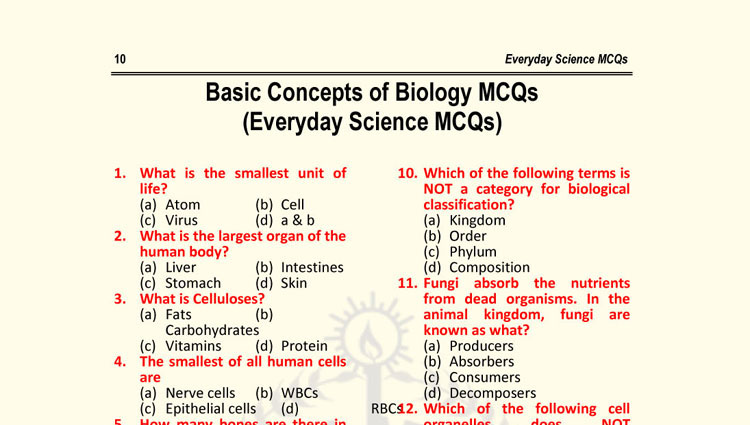

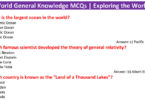
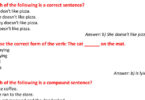

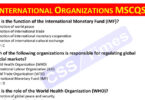
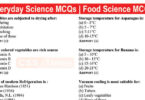
CSSTIMES is providing me the best and authentic material for my CE preparations, free of cost. More power to you. You are helping those who can not avail the subscriptions. Great work.